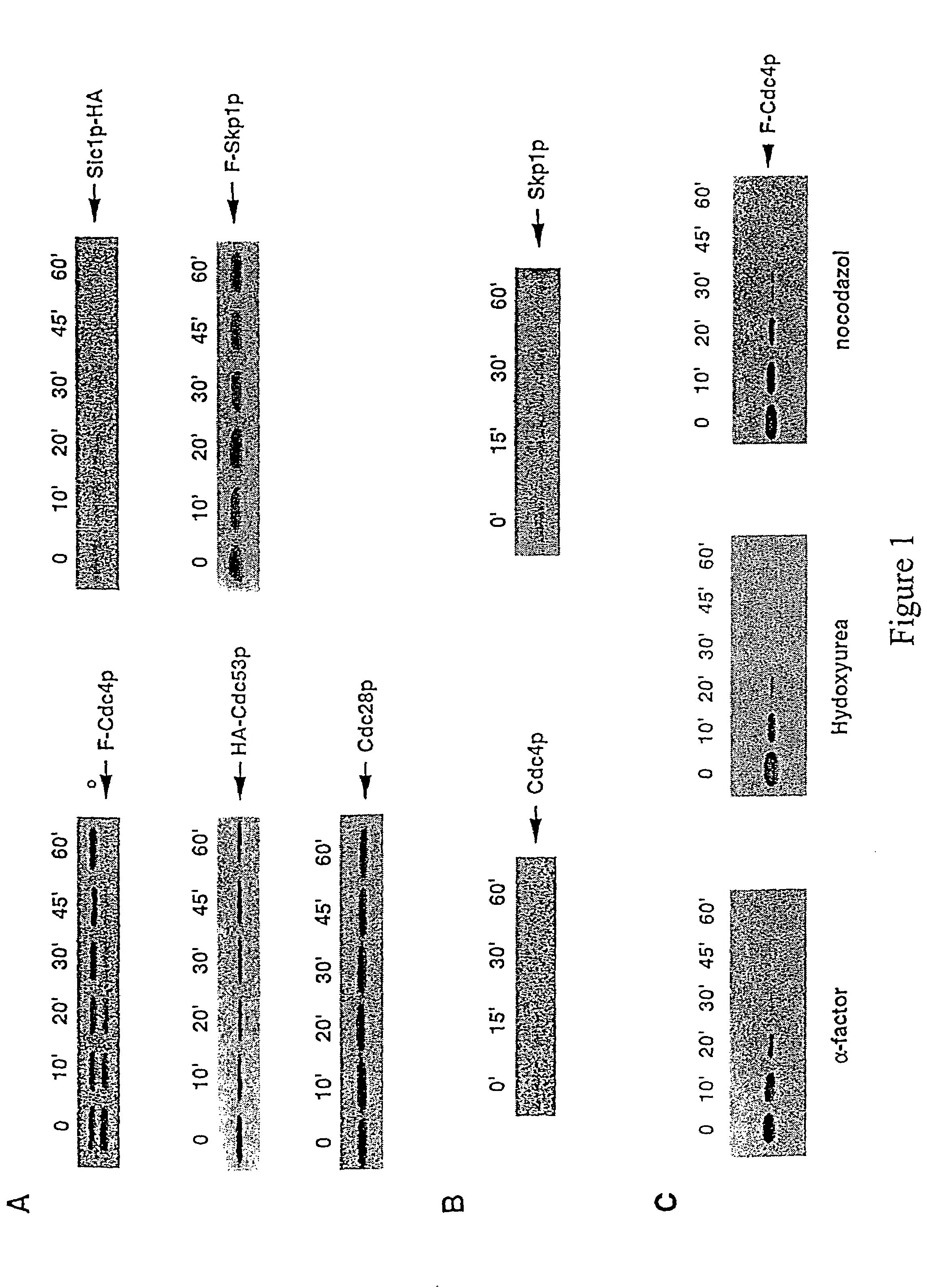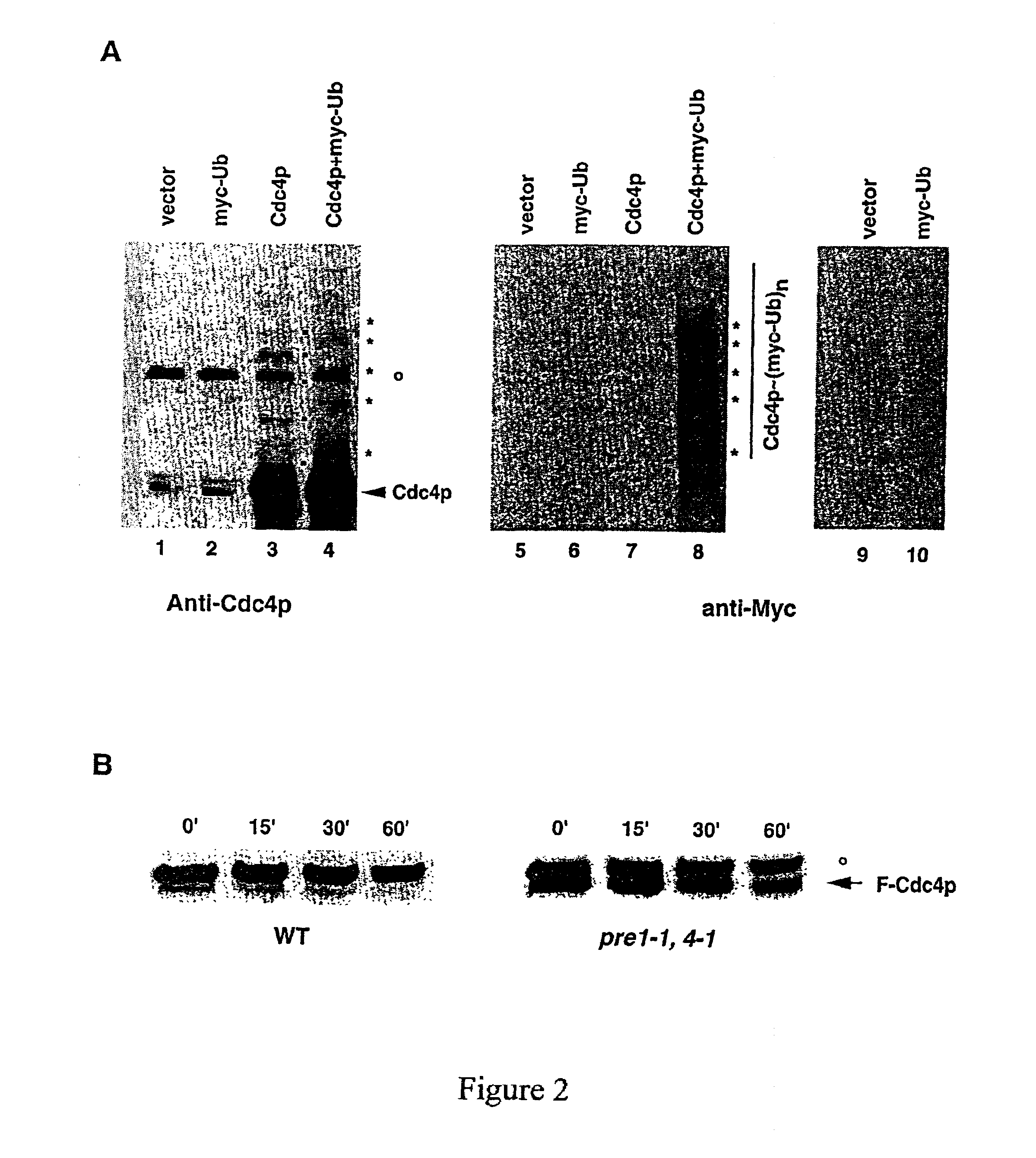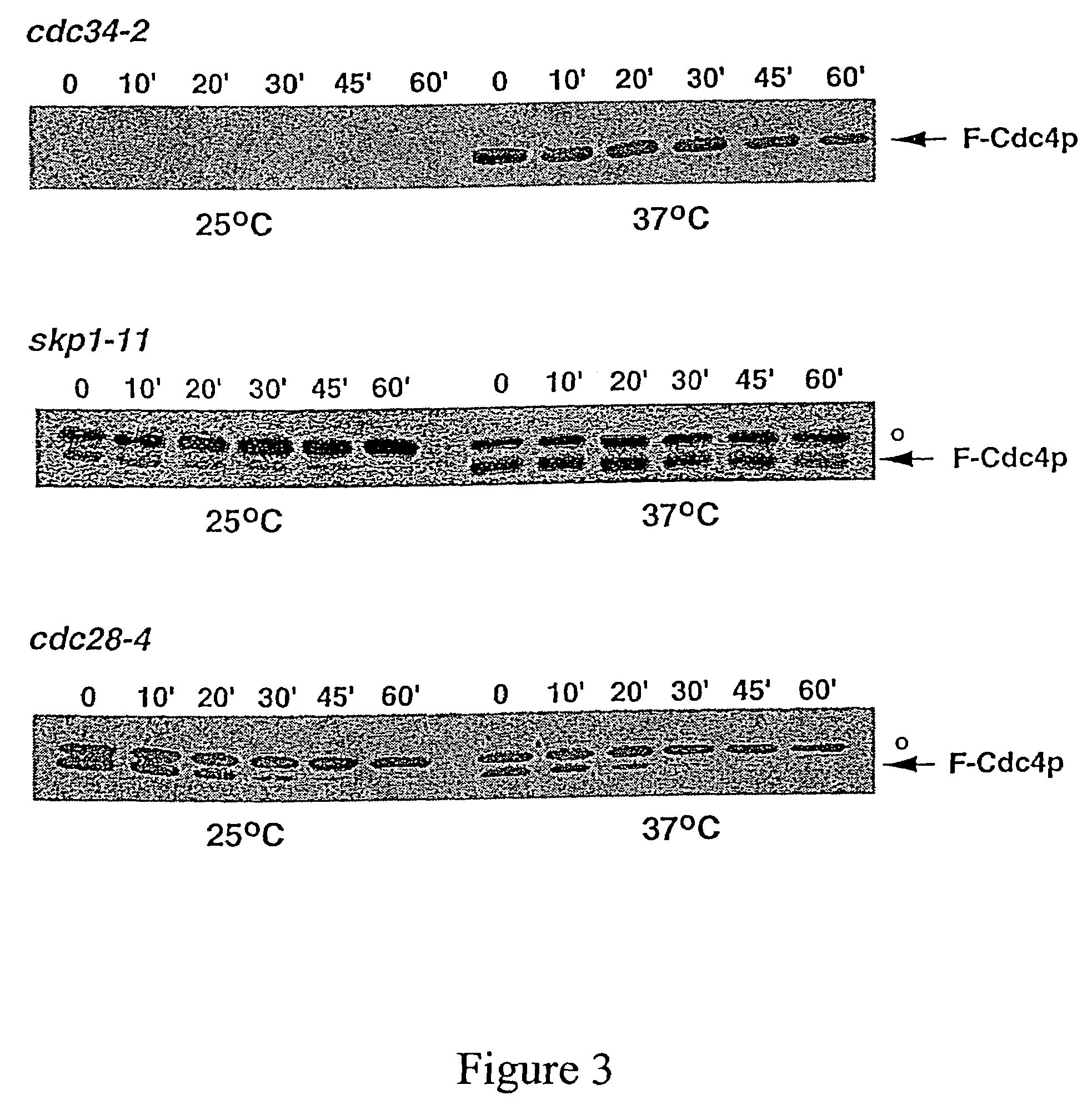Targeted proteolysis by recruitment to ubiquitin protein ligases
a ubiquitin protein and ligase technology, applied in the field of targeted proteolysis by ubiquitin protein ligase, can solve the problems of inability to rationally design such disease gene inability to detect disease genes or pathogen gene antagonists, and loss of function, so as to increase or decrease the activity of ubiquitin protein ligase, increase or decrease the activity of a target polypeptide, and reduce the ubiquitination of the target polypeptid
- Summary
- Abstract
- Description
- Claims
- Application Information
AI Technical Summary
Benefits of technology
Problems solved by technology
Method used
Image
Examples
Embodiment Construction
4.1. General
[0039]The invention provides compositions and methods for increasing or decreasing the rate of ubiquitin-dependent proteolytic degradation of a target polypeptide in a host cell.
[0040]In preferred embodiments, the invention provides methods and reagents for targeted proteolysis through recruitment of the targeted polypeptide to a protein ubiquitin ligase. Preferred protein ubiquitin ligases include E3-type ubiquitin ligases such as the SCF ubiquitin ligases, the HECT ubiquitin ligases or the UBR1 ubiquitin ligases. The targeted polypeptide may be a natural target of ubiquitination by these ubiquitin ligases or may be a polypeptide which is not normally targeted for degradation by ubiquitin conjugation in general or by an E3-type ubiquitin protein ligase of the invention in particular. In preferred embodiments, the target polypeptide is recruited to an E3 ubiquitin ligase complex either by covalent joining of the target polypeptide to a component of the complex (cis targe...
PUM
 Login to View More
Login to View More Abstract
Description
Claims
Application Information
 Login to View More
Login to View More - R&D
- Intellectual Property
- Life Sciences
- Materials
- Tech Scout
- Unparalleled Data Quality
- Higher Quality Content
- 60% Fewer Hallucinations
Browse by: Latest US Patents, China's latest patents, Technical Efficacy Thesaurus, Application Domain, Technology Topic, Popular Technical Reports.
© 2025 PatSnap. All rights reserved.Legal|Privacy policy|Modern Slavery Act Transparency Statement|Sitemap|About US| Contact US: help@patsnap.com



